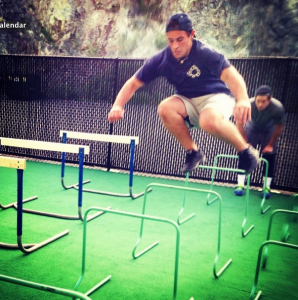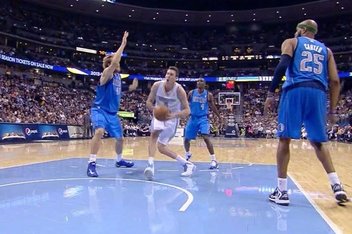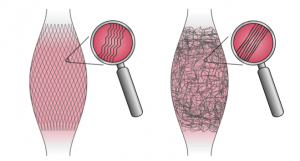Building The Braking System
“What do you focus on to reduce non-contact lower body injuries like ACL tears, hamstring strains and ankle sprains?”
While this is a fairly complex question I think I can formulate a helpful response.
First and foremost a dependable assessment process is necessary to determine an athletes movement quality (for me that means FMS + PRI systems). Secondary to improving movement quality based on the assessment I believe how we focus on programming our strength and power exercises can have a significant impact joint and tissue durability.
If we are programming to reduce performance related injuries, it’s important to understand that that the majority of non-contact musculoskeletal injuries come when the athlete is deccelerating and the tissue is being stressed eccentricly.
We frequently see athletes roll an ankle or jack up a knee when landing from a jump or planting a foot and almost never when they are concentrically producing force and accelerating. With this in mind it’s imperative for coaches to focus on improving our athletes ability to buffer forces eccentricly. Eccentric strength, specifically dynamic eccentric strength is the musculoskeletal braking system.
“How fast would you drive a sports car with no brakes?”-Robert Dos Remedios
Many athletes, especially the very powerful ones tend to be like Ferraris under the hood but have no capacity to slow down all that horsepower efficiently and effectively. Ineffective, eccentric motor control will result in a gradual chipping away of the nervous system, local joint and tissue micro-trauma and eventually complete tissue failure.
Aside from reducing injuries, as it relates to sprinting and jumping an inability to efficiently decelerate will result in reduced power output. If we train to improve strength eccentricly we can improve our athletes efficiency during the ammortization phase and power expression during the concentric phase. For these reasons, I think it’s best practice to build the braking system before you focus on adding horsepower.
Static Eccentric Training
We can improve stability around the joint and positively influence soft tissue structure to become more resilient to stress by “grooving” patterns eccentrically during strength training. I suggest to do that by programming an eccentric emphasis phase into some of your strength progressions early on in the training cycle.
I often emphasize the eccentric portion of exercises like lateral squat, front squat, split squat or single leg deadlift to improve motor control around the joint as well as stress the soft tissue to be stronger eccentricly. The greater we stress the tissue eccentrically during training the more resilient it will be under eccentric stress during sport. I firmly believe soft tissue injuries like hamstring, quadricep, adductor and calf strains can be virtually prevented with good strength programming.
Eccentric Rear Foot Elevated Split Squat
Eccentric Lateral Squat
Eccentric Single Leg Slideboard Curl
Eccentric Front Squat
Eccentric Single Leg Deadlift
Dynamic Eccentric Training
In order to most effectively carry over these eccentric strength improvements to sport it’s imperative to focus on eccentric mastery when training dynamically as well. This means emphasizing coaching of the eccentric component of power drills like jumps, hops and bounds. Training joint stability dynamically is our best tool when it comes to preventing non-contact injuries like ACL ruptures and ankle sprains. Additionally, the eccentric stress endured while landing will improve the tissue’s collagen structure improving it’s elastic loading capability.¹
Keep in mind, an athletes ability to buffer forces during power drills will very much depend on their relative static eccentric strength. Athletes who are weak on one leg in the weight room will struggle mightily when it comes to efficiently decelerating their body weight in a dynamic environment. In my experience, overweight and relatively weak athletes should be progressed with caution here.
Success in programming the power exercises below will depend on progressing conservatively based on proficiency of the athlete’s landing mechanics. Being able to “stick” a landing in a good position means the athlete can effectively accept the eccentric load. Demand that the athlete shows you that he or she can stabilize and hold a landing position at will before you introduce more dynamic and reactive progressions.


